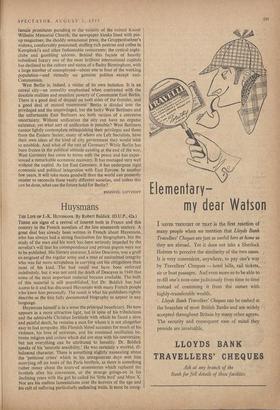The Divided City
CITY DIVIDED: BERLIN, 1955. By Ewan Butler. (Sidgwick and Jackson, 16s.)
Do you remember how American war-correspondents, cabling from the Savoy, strained their superlatives to sing the praises of Londoners sleeping in tube shelters? In 1948 the legend was trans- ferred lock, stock and barrel to West Berlin. Faced by an all-out Russian blockade, precariously provisioned by the American and British airlift, the little Berliners grinned and bore it like little Cockneys. Now, in 1955, the legend has hardened into a formula. In a quite literal sense, Berlin lives on it.
Mr. Butler's account of the city is written in the spirit of this legend. With the popular reporter's incurable appetite for the clich5, he sees Berlin in boldly simplified terms : West Berliners as a gallant garrison standing fast against Asia, East Berliners as a million frightened people yearning for freedom. To assist the limping imagination, in one chapter he transfers the situation to London as it might be if Germany and its allies occupied West London and Russia's Marshal Rokossovsky controlled the City and East London : 'The shop windows of Piccadilly shine brightly. There are new cars on the streets of West London and buses and taxis. Men stand in pubs and argue cheerfully. . . . In the Strand and in Trafalgar Square (Russian-occupied) it is dark every night. Policemen, heavily armed, walk through the ruinous streets of East London, but they meet few passers by. East London is a dead city.'
In fact, the visitor to Berlin may find the complex situation that exists by no means as reassuring as it appears in this book. West Berlin lives a highly artificial existence as a shop window for the democratic way of life; but what impression does the window give? The makeshift glitter of the Kurftirstendamm, with its male and female prostitutes parading in the vicinity of the ruined Kaiser Wilhelm Memorial Church; the newspaper kiosks lined with pin- up magazines; the shoddy sensational press; the Gruppenfuehrer's widows, comfortably pensioned, stuffing rich pastries and coffee in Kempinski's and other fashionable restaurants; the cynical night- clubs and gambling saloons. Behind this facade of heavily subsidised luxury one of the most brilliant international capitals has declined to the culture and status of a flashy Birmingham, with a large number of unemployed—about one in four of the working populationand virtually no genuine politics except anti- Communism.
West Berlin is, indeed, a victim of its own isolation. It is an unreal city—an unreality emphasised when contrasted with the desolate realities and manifest poverty of Communist East Berlin. There is a good deal of despair on both sides of the frontier, and a good deal of mutual resentment. Berlin is divided into the privileged and the unprivileged, but the lucky West Berliners and the unfortunate East Berliners are both victims of a corrosive uncertainty. Without unification the city can have no organic existence, yet what sort of unification is possible? West Berliners cannot lightly contemplate relinquishing their privileges and those from the Eastern Sector, many of whom are Left Socialists, have their own ideas of the kind of city government they would wish to establish. And what of the rest of Germany? While Berlin has been frozen in the political attitude existing at the end of the war, West Germany has come to terms with the peace and has exper- ienced a remarkable economic recovery. ft has managed very well without the capital. As for East Germany, it has undergone rigid economic and political integration with East Europe. In another few years, it will take more goodwill than the world can presently muster to reconcile these vastly different societies, and unless this can be done, what can the future hold for Berlin?
EMANUEL LITYINOFF



































 Previous page
Previous page